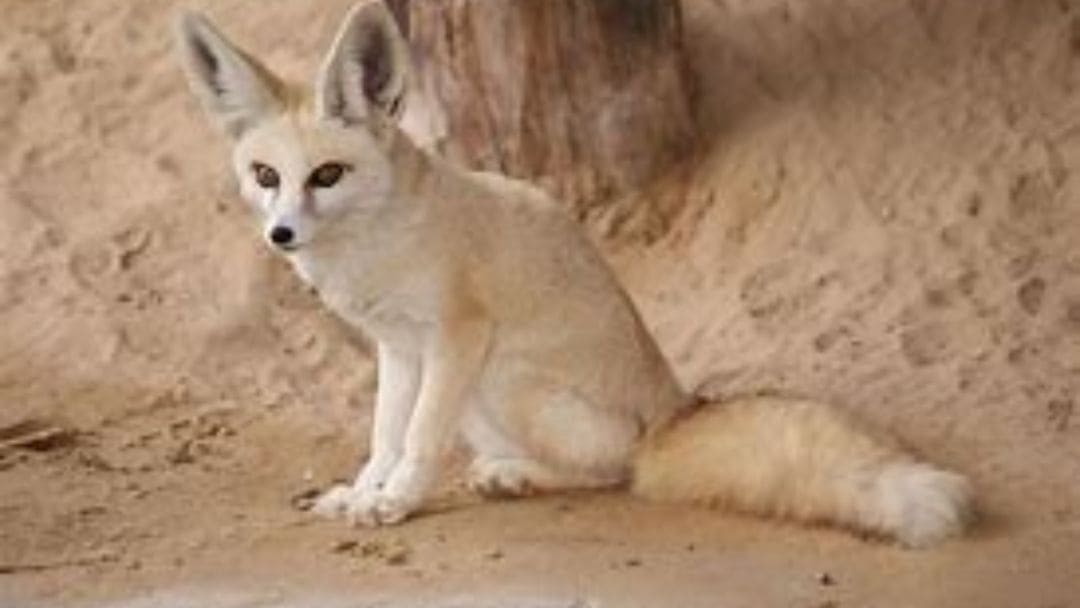Rüppell’s Fox, a Saharan nomad with a sandy coat and a knack for surviving scorching heat, thrives in the harshest desert with remarkable adaptations and an elusive nature.
Imagine a vast sea of sand stretching endlessly under a relentless sun. This is the domain of the Rüppell’s Fox (Vulpes rueppellii), a desert specialist thriving in the unforgiving heat of the Sahara, one of the hottest and driest places on Earth. How do these elusive creatures survive where others would perish?
Let’s delve into the world of the Rüppell’s Fox, exploring their remarkable adaptations for surviving extreme heat, their elusive nature, and the secrets to their success in this harsh environment.
Built to Withstand the Heat: Desert Adaptations
Rüppell’s foxes are perfectly suited for life in the Sahara. Here’s a closer look at their desert adaptations:
- Sandy Camouflage: Their fur, a beautiful shade of sand, blends seamlessly with the desert landscape, making them nearly invisible to predators during the day.
- Elusive by Nature: These foxes are solitary creatures, preferring to navigate the desert alone. This solitary behavior, along with their excellent camouflage, contributes to their elusive nature. Spotting a Rüppell’s Fox in the wild is a rare treat for desert explorers.
- Masters of the Night: The scorching daytime heat of the Sahara is a significant challenge. To avoid the worst of it, Rüppell’s foxes are primarily nocturnal. They emerge at night when temperatures are cooler to hunt and explore their surroundings.
Living on the Edge: Water Conservation and Efficient Hunting
Water scarcity is a constant threat in the Sahara. Rüppell’s foxes have adapted to conserve water in several ways:
- Minimal Water Required: Their bodies are incredibly efficient at extracting water from their prey and desert vegetation, minimizing the need for them to drink free-standing water, which is scarce in the desert.
- Nocturnal Hunting: Hunting at night, when temperatures are cooler, allows them to conserve energy and minimize sweating, further reducing water loss.
These clever adaptations allow them to survive in a desert environment where water is a precious commodity.
Desert Diet: Making the Most of Limited Resources
Despite the harsh conditions, the Sahara offers a surprising variety of food sources for Rüppell’s foxes. Their diet consists of:
- Small Mammals: Rodents and other small desert animals are a primary source of protein and moisture.
- Insects: These abundant prey items provide valuable nutrients and hydration.
- Desert Plants: On occasion, they might consume fruits, leaves, or other desert vegetation to supplement their diet, particularly during times of scarcity.
This dietary flexibility allows them to exploit whatever food sources are available in the ever-changing desert landscape.
A Testament to Resilience: The Enduring Spirit of the Rüppell’s Fox
The Rüppell’s Fox stands as a testament to the power of adaptation and resilience in the animal kingdom. Their ability to thrive in the harshest desert environment showcases the remarkable diversity and adaptability of the fox family.
As we continue our exploration of the captivating world of foxes, the Rüppell’s Fox reminds us that even in the most extreme conditions, life finds a way, and creatures like these foxes have evolved incredible strategies to not just survive, but flourish.
Rüppell’s Fox FAQs: Unveiling the Secrets of the Saharan Shadow
1. Where do Rüppell’s Foxes live?
Rüppell’s Foxes are true desert dwellers, calling the vast Sahara Desert their home. Their sandy fur provides camouflage in this arid environment, where temperatures can be scorching and water is scarce.
2. Why are Rüppell’s Foxes rarely seen?
These foxes are known for their solitary and elusive nature. They are most active at night and their excellent desert camouflage makes them difficult to spot during the day.
3. How do Rüppell’s Foxes survive the extreme heat of the Sahara?
Rüppell’s Foxes have several adaptations to cope with the harsh desert environment:
- Nocturnal Activity: They are primarily active at night when temperatures are cooler.
- Water Conservation: Their bodies are very efficient at extracting water from their prey and desert vegetation, minimizing their need for scarce free-standing water.
4. What do Rüppell’s Foxes eat?
Rüppell’s Foxes are resourceful omnivores with a diet that includes small mammals, insects, and even some desert vegetation. This adaptability allows them to exploit the limited food sources available in the Sahara.
5. Are Rüppell’s Foxes endangered?
Rüppell’s Foxes are currently not classified as endangered. However, threats like habitat loss due to human activity and competition for resources from other desert animals could pose challenges in the future.


